This post contains affiliate links, but at Daily Dog Tag, we only share products that we would use ourselves or with our dogs.
Recently I was asked I think about crates. Since we crate our dogs, I feel comfortable recommending others to use crates at night or for short periods during the day. Please note, I am not a dog trainer or an expert on dogs. I am a woman who loves her dogs and always tries to do right by them.
My first on-my-own-dog was a Brittany Spaniel mix puppy that I adopted from the county shelter while in college. I didn’t know what a crate was, and neither did Daisy. She spent her “alone time” redecorating my apartment and my parents’ laundry room and chewing up half of several pairs of shoes. One heart-stopping afternoon, I came home to all four burners blazing on my old gas stove. Luckily, Daisy was fine, and nothing was on fire. However, it was a terrifying experience. I started taking the knobs off my stove before leaving the apartment, but I always worried a little about leaving her alone until she was around four years old.
Years later, when it was time to get another dog, we had heard about the benefits of using a crate. Since I was home almost every day, I was unsure if we needed a crate. I flashed back to Daisy and realized we owed it to our dog to try crate training. Besides the obvious reasons for keeping the home and possessions safe, it also keeps the dog safe. Dog-proofing should be done regardless if you are home most of the time or not. When you aren’t home, you don’t know what your dog is getting into. Some things, like Daisy turning on a stove, aren’t foreseeable. Other things, like a puppy chewing on everything he can reach or a garbage-loving dog tipping the trash can, are a little more predictable. Unfortunately, something seemingly benign as a chip bag can have terrible consequences.
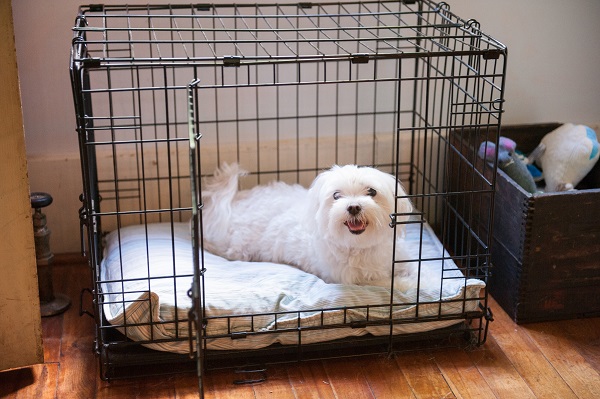
We got Nelly as a puppy and started her off in a crate to minimize accidents while we were away. When we leave the house, our dogs stay in their crates.
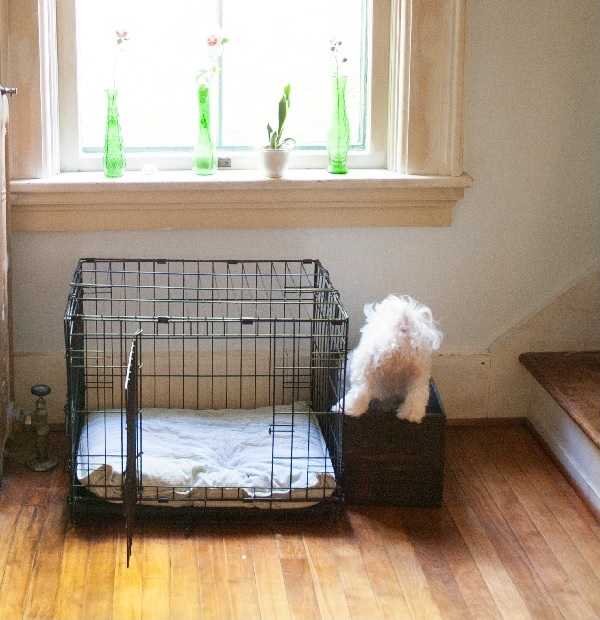 Using crates sets my dogs up for success. The dogs don’t cause damage or have the chance to counter-surf and get into the garbage. The benefits of crate training are numerous, including:
Using crates sets my dogs up for success. The dogs don’t cause damage or have the chance to counter-surf and get into the garbage. The benefits of crate training are numerous, including:
- Traveling keeps pets safe in the car and possibly prevents them from running loose in case of an accident or stopping to get gas. It is also helpful for making a new place feel familiar.
- Injured pets may need to be on restricted activity; crates make it easier to confine/supervise.
- A crate can prevent a dog from getting out when people are coming and going (movers, repair people, deliveries, etc.)
- A place where the dog will be undisturbed.
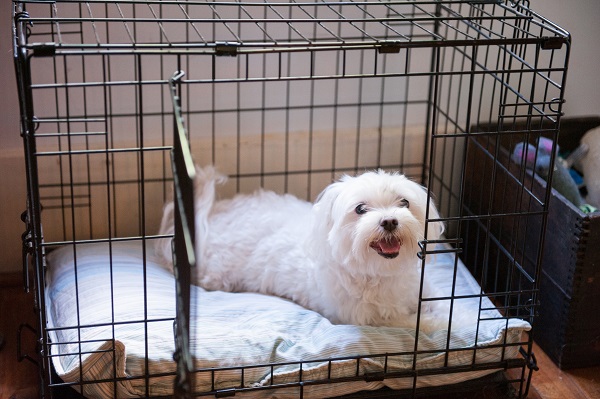 We taught our kids to leave the dog alone if she is hanging out in the crate. We often find our dogs sleeping in their crates at various times of the day. Ironically, Nelly’s is the smallest and most popular.
We taught our kids to leave the dog alone if she is hanging out in the crate. We often find our dogs sleeping in their crates at various times of the day. Ironically, Nelly’s is the smallest and most popular.
Last summer, when we took Theo home with us from the shelter, we stopped at the store to get him his crate. After a month in a shelter, Theo planted his feet and refused to get in the kennel. Believing in positive reinforcement, I took a different tactic. Knowing that Theo is food-motivated made it easy to change his opinion of the crate.
To start, we put a towel in the bottom of the crate and tossed a treat on it. Leaving the door open, Theo gingerly put his head in the crate and gobbled the treat. We continued doing this, placing the treat further into the crate, so eventually, he had to put his whole body in the crate.
We didn’t shut the door, so he could grab the treat and leave. After a while, we closed the door for a short time as his anxiety decreased. He received treats when in the crate and positive reinforcement for staying in it. After a few days, he would go into the crate happily once a treat was in there. We left him with a peanut butter-filled Kong at bedtime, which was enough to keep him calm. These days, all the dogs get in their crates and are on command, even if we have someone at the door.
On Thursday, we had an unwanted need for the crates. I fell off a ladder and broke my left arm. Before the emergency personnel arrived, my kids put all the dogs in their crates. While the police and EMTs were here, the dogs were quiet in their crates. There was no worrying about the dogs being too protective of me, getting in the way, or escaping as people came and went. The crates gave me peace of mind when I didn’t have the energy to deal with the dogs.
Alice’s dog, Darla, also loves her crate. Alice keeps the crate door open unless Darla is on exercise restriction.
When Alice and her girls go on vacation, Darla likes the familiarity of her crate. Similarly, we take the crates for our dogs on overnights. I think it helps them settle down, and I don’t worry what they might get into if we have to leave them for a short time.
Choose the right kennel for your dog at Petmate.com.
Follow Loving My Company on Instagram.
About Loving My Company: Based in Syracuse, NY, Alice specializes in dog photography, high school senior portraits, and business profile portraits.


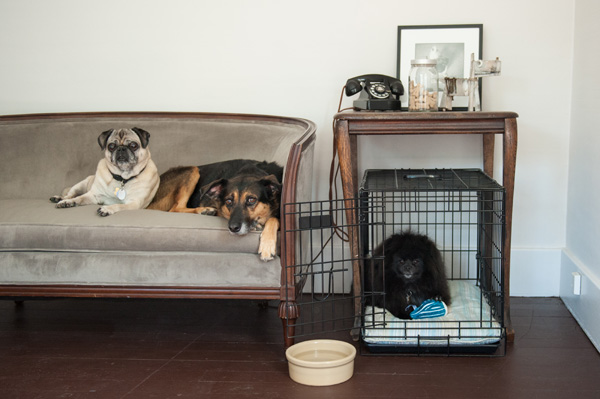
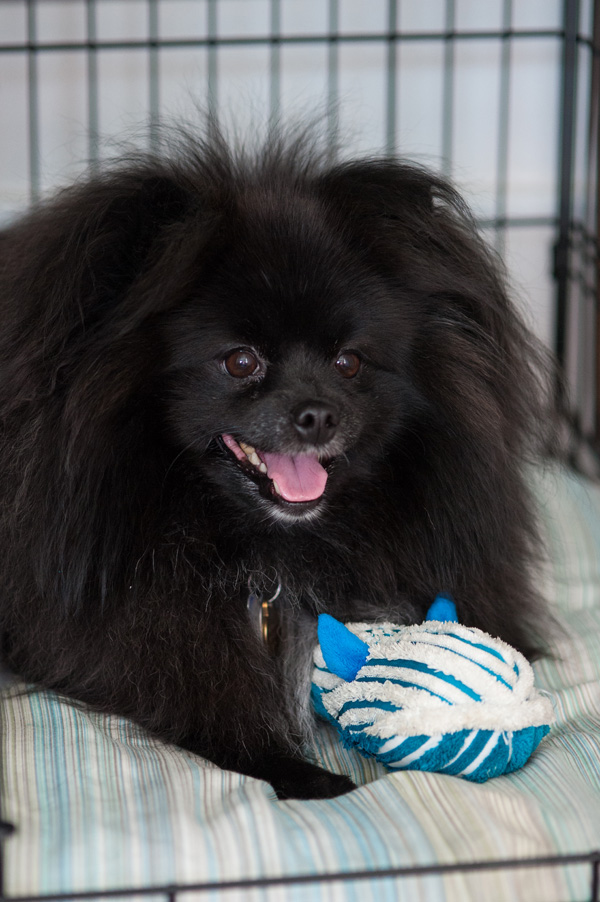

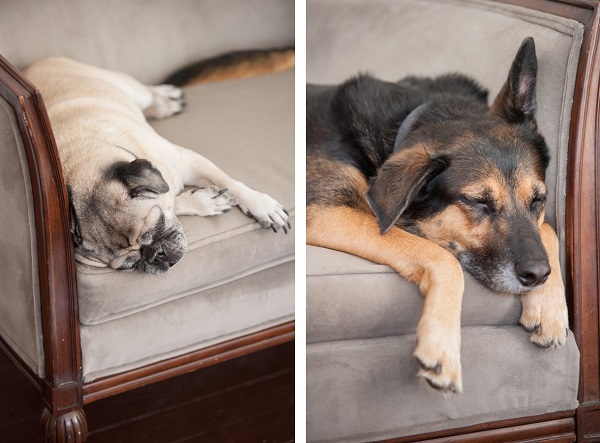
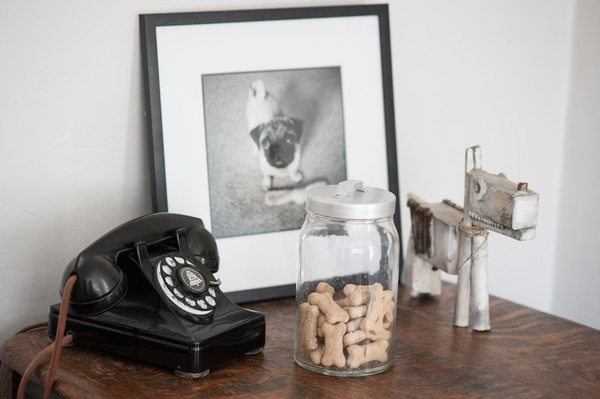
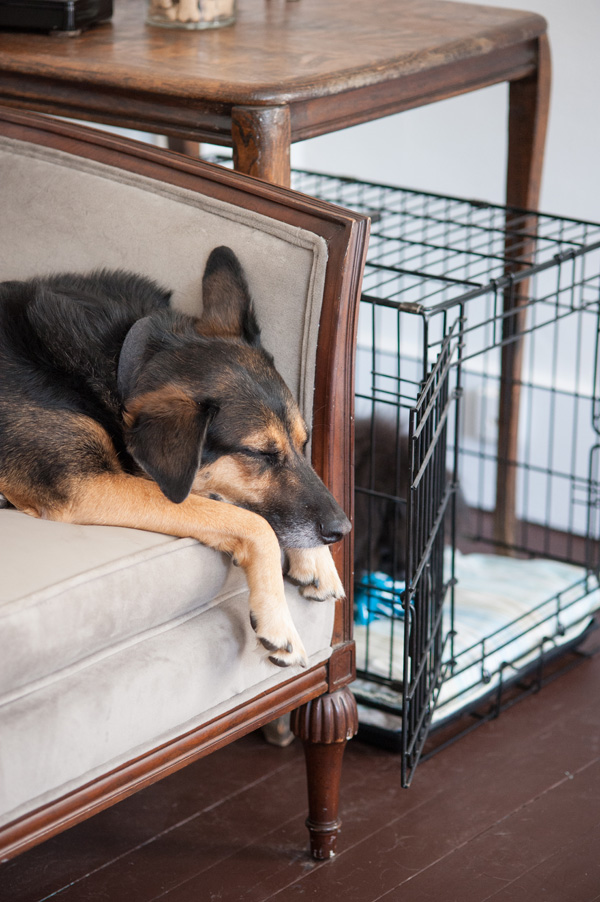








Our puppy, Jones, loves his crate! I firmly believe in crate training and get a lot of flack from people who believe they are not fair to the dog. But as you demonstrated here, they are comforting to pets and when uses properly, keep them safe. As an added bonus, Jones rarely gets in trouble because he doesn’t get the opportunity!
We use crates – they are safe places, quiet places, and used at meal time they allow the non-Labradors in the family a chance to eat without having the yellow vulture staring at them 🙂
We have two very different dogs at home. One is a female that we got as a puppy. She is 100% trustworthy and is left loose when we’re not home. You could leave a steak on the living room coffee table and she wouldn’t touch it while you were away. The other is a male who we rescued as an adult. He had severe separation anxiety when we got him, and is also a chronic chewer. He is a danger to himself as well as the house if he’s not supervised. We crate him when we’re not home and we’re all happier for it, including him. He knows we’ll come back and there are no wrong answers in the crate to tempt him. It’s nice to know we won’t come home to find him ingesting something harmful or destroying something. It’s also nice to know the two of them won’t get in a tussle while nobody’s around. Our female also has a crate and she chooses to sleep in it at night even though she doesn’t have to! I’m a big believer in using crates for dogs, and I also think it’s pretty easy to teach a dog to enjoy his crate, not just tolerate it. A crate can be a very safe and rewarding place.
I never really thought about crates as a way to keep the dog safe in all those situations. My neighbor’s dog nearly killed himself when he knocked a large piece of furniture on himself. They were gone for the day and he was trapped for possibly hours underneath it. He had some severe injuries. Our doxie used to get out whenever we would have repairs done on the house. She was so quiet and quick. I will have to invest in a crate when we get our future dog. My husband has his heart set on a rescue Frenchie.
Oh my gosh, I can’t believe that Nelly turned on all the burners! That’s pretty scary. Glad the crates worked out for you and your family. I hope your arm is doing ok.
I too am a big fan of crate training. It was the easiest way to house train. I admittedly leave my terrier out more and more when I’m not home. After a few times of coming home to torn couch cushions- I have reverted back to crating him if I’m going to be gone for any longer than an hour. And I think it’s great to leave the crate around and available for them to use when they want! … how’s your arm healing?
I hope it was a couch you are tired of! Surgery on Wednesday, but hopefully I will have a quick recovery. It is an easy procedure.
Crates are so easy to use to minimize mischief when you aren’t home.
Great technique to help Theo get over his understandable reluctance of crates!